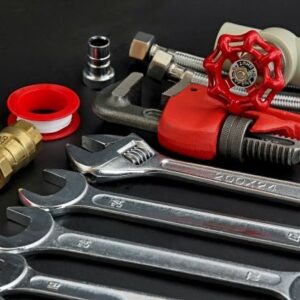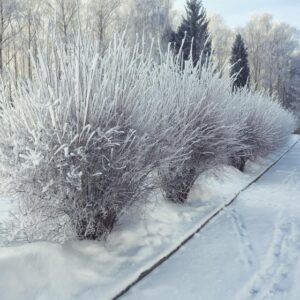Annual Tree and Shrub Pruning Helps Your Garden Thrive
Trimming hedges, bushes and trees in your garden yields several benefits. Not only does trimming keep your landscape looking its best throughout the year, but it also promotes healthy plants. Before you get to work with your pruning shears, though, find out when is the best time to trim various plants for quick healing, more abundant fruiting and more vigorous growth.
When Is the Best Time to Prune Trees?
As a rule of thumb, you should prune trees in late winter through early spring. Depending on the climate where you live, this could be anytime between January and April. In many cases, late winter to early spring spans February and March.
At this time of year, your deciduous trees are bare. Broken branches and dead growth are easier to see and trim away. Shaping bare trees is also easier without leaves to get in the way.
Also, late winter is a good time to trim trees because it precedes a period of rapid growth. The spring growth spurt helps trees heal faster at the pruning sites. It closes the wounds so that insects can’t burrow in and damage the entire tree.
It’s important to have the right tree trimming tools when the time comes to prune. The best pruning tools for trees have long handles that let you reach the upper tree canopy. Be sure your tree pruners are freshly sharpened, and your work will be quicker and easier.
A few types of trees, including birches, maples, junipers and walnuts, recover better if you trim them in the late spring/early summer. They bloom early in the spring from the previous year’s growth, so the time to prune these varieties is after they are finished blooming.
The effect of tree trimming before and after pruning is often dramatic. When you take advantage of the best time to trim, you stimulate a wave of new growth.
What Happens if You Trim Too Early?
You may be tempted to get to work with the garden shears as soon as your trees shed their leaves. Keep in mind, though, that fall is the time when trees are gathering their resources for the winter. Pruning too early in the fall can result in weakened or even dead trees when spring arrives.
Also, if you prune too early in winter, your trees will not begin healing over the pruning sites for several months, leaving them more vulnerable to freezing temperatures, disease and early insect invasion in spring.
Should You Ever Top a Tree?
Arborists do not recommend topping your trees if you want to keep them. Topping involves cutting back vertical branches to stubs. It is the most damaging type of pruning. If you have a tree that has grown too large for your yard, blocking the sunlight, prune the lower branches only. If it is still too large, consider removing the tree instead.
When Should You Trim Hedges?
You should trim your hedges at the same time of year you trim most of your trees — late winter to early spring. If your hedge has gotten out of hand, power hedge shears may be the best way to begin. Follow up by hand with freshly sharpened hedge trimming shears to clip away all the stray leaves or branches.
You can prune those hedge varieties that grow quickly, such as spirea, viburnum and privet, twice per year to keep them looking full and shapely. By trimming hedges like these after any blossoms turn brown and again in late winter, you help them get sunlight right through to their core. The foliage on untrimmed hedges may become too dense for sunlight to penetrate, resulting in brown, dying branches deep within.
If you shear your hedges from the ground up, you can get a nice-looking inverted V-shape that ensures the lower branches get as much light as the upper ones. This is important because the plants naturally grow wider at the top, blocking lower foliage.
Evergreen hedges, such as junipers, typically require pruning less often than deciduous hedges. If needed, you can prune them with shears or garden scissors to keep their desired shape and eliminate brown areas. If you trim the tops, it’s a good idea to protect them from snow damage with plastic chain-link fencing or burlap and twine.
What Is the Best Way to Trim Bushes?
Garden trimming keeps bushes in their place, leaving room for annuals and perennials to flourish. Usually, you should prune your bushes when you trim your trees in late winter or early spring. If your bushes flower, you can trim safely once the blossoms fall.
Many bushes are resilient enough to withstand pruning any time. If they are overgrown, have brown spots or are getting too dense, get out your gardening shears for a quick fix. If you plan to do any significant bush trimming, be sure to wait until the dormant period.
The 1/3 Method for Shrub First Aid
For bushes and shrubs that are spindly, overgrown and show signs of neglect, you can use the 1/3 method to stimulate new, healthy growth. It works best on established plants rather than new transplants.
Some types of shrubs that respond well to the 1/3 method include:
- Lilac
- Forsythia
- Mock orange
- Barberry
- Japanese holly
The idea of the 1/3 shrub pruning method is to trim the plant aggressively once each year for three years. This should typically take place in late winter before the shrub has begun developing buds. If your shrub is an early bloomer, such as forsythia, be sure to leave some buds in place to enjoy later.
First, trim away any brown or dead growth from the shrub with a sharp pair of garden shears. If any branches are damaged from winter weather, remove those too.
Next, select a few of your primary stems to keep. Trim all other branches away. By the time you have finished your garden pruning, you should have eliminated about 1/3 of the original shrub. If you do this correctly, you will see a significant improvement in your shrub in just a few weeks when it begins its growth cycle.
For those shrubs that are severely overgrown, there’s an even more extreme method of garden trimming. Most people do this only if they are at the point of digging up the shrub for good. Instead, give it a second chance with an extreme cutback.
If you have a dogwood, potentilla, honeysuckle, hydrangea or weigela that shows severe signs of neglect, trim all of its branches to about six inches above ground. If the shrub has some life left in it, it will begin regrowth in a few weeks. The new growth will be healthy and vigorous, given the right care and watering.
Gear up for Gardening
Stop by your True Value Store to get the tools you need for garden trimming, tree pruning and more. We can answer your gardening questions and make suggestions on the best tree trimming tools for your landscape.












